A research centre in Maharashtra is hoping to put an end to the annual onion crisis with an innovative controlled storage experiment
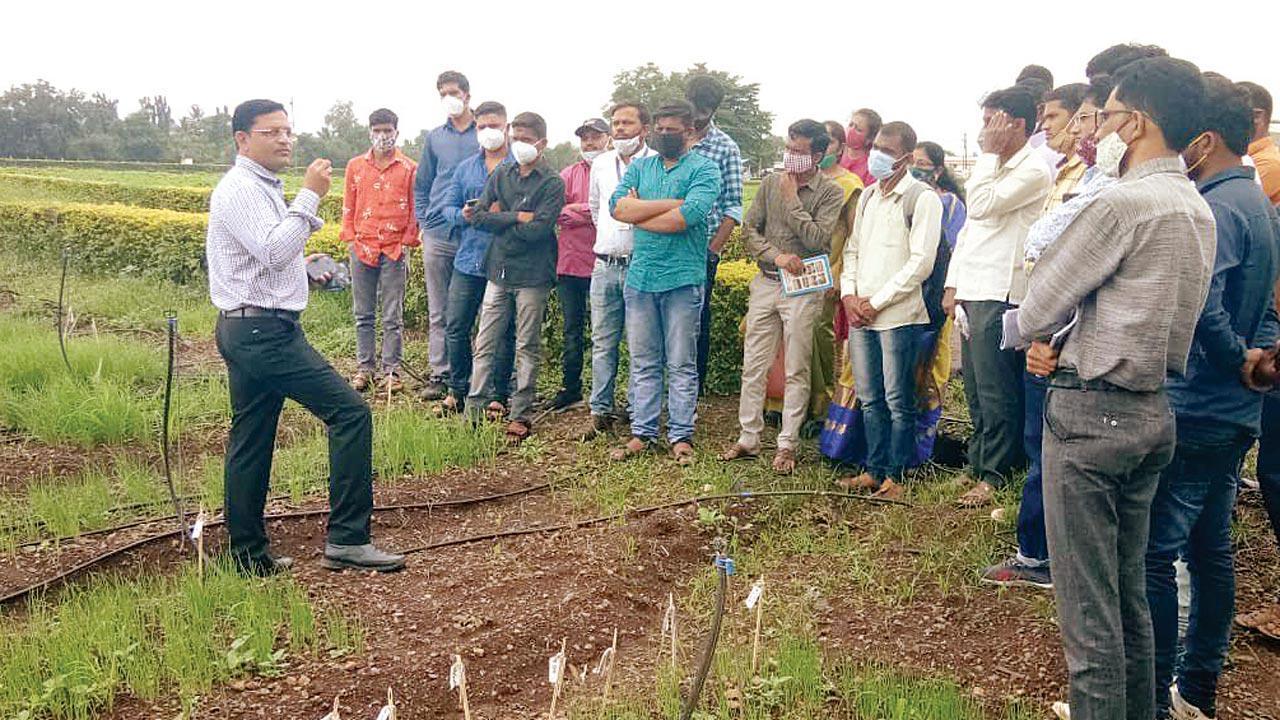
Dr Rajiv Kale, senior scientist at the Directorate of Onion And Garlic Research, speaks with local farmers and stakeholders at the institute’s campus
![]() While driving on the Nashik-Pune Highway (NH-50), the Directorate of Onion and Garlic Research (DOGR) is an unmissable campus. For someone whose daily meal is characterised by the garlic thecha and who relishes the kanda-lasoon paste in most gravies, the research institute symbolised sublime sunshine. The institute will soon complete 25 years of agronomic experiments under the Ministry of Agriculture and Farmers’ Welfare.
While driving on the Nashik-Pune Highway (NH-50), the Directorate of Onion and Garlic Research (DOGR) is an unmissable campus. For someone whose daily meal is characterised by the garlic thecha and who relishes the kanda-lasoon paste in most gravies, the research institute symbolised sublime sunshine. The institute will soon complete 25 years of agronomic experiments under the Ministry of Agriculture and Farmers’ Welfare.
ADVERTISEMENT
The sprawling 56 acres inspired me to visit the premier national repository for onion and garlic germplasm (currently rearing over 1,200 onion varieties/germplasm).
In COVID-19 times, both onion and garlic assumed supreme importance in the context of immunity boosting efforts.
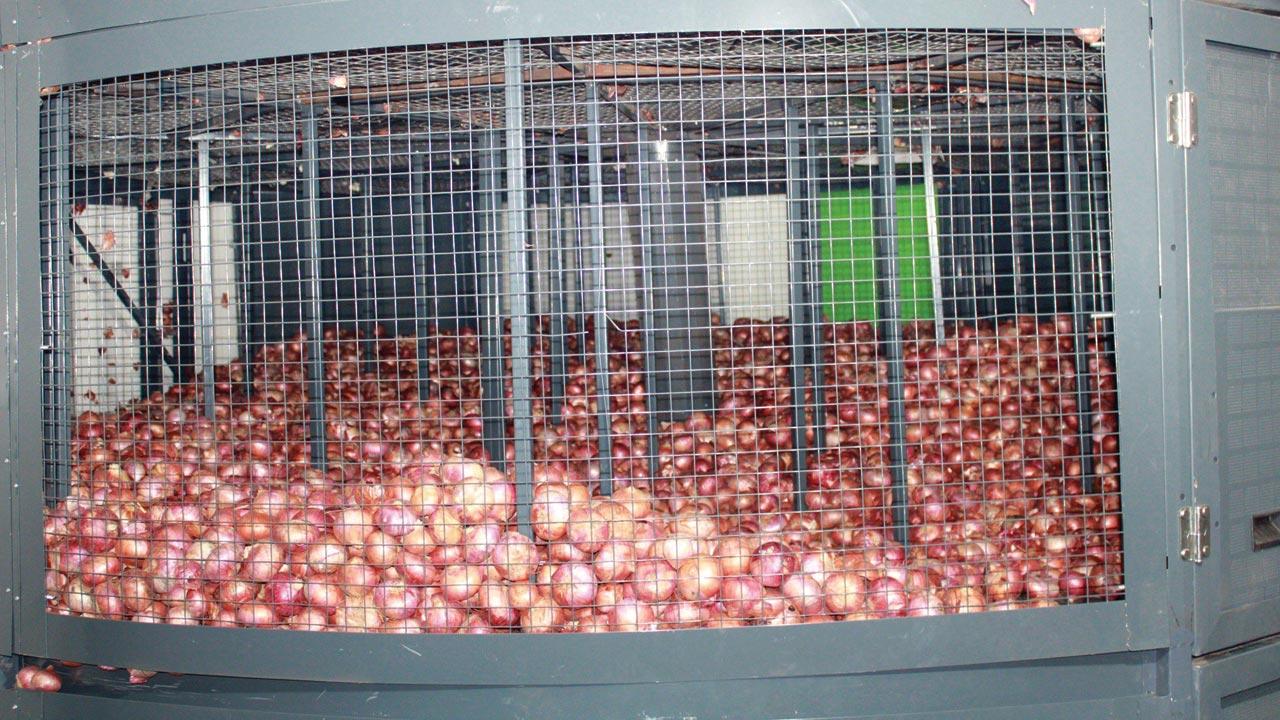 The modified storage design is sturdier. It isolates the onions from external climatic onslaught, and removes unwanted gases, reducing losses up to 10 to 15 per cent during crucial storage months
The modified storage design is sturdier. It isolates the onions from external climatic onslaught, and removes unwanted gases, reducing losses up to 10 to 15 per cent during crucial storage months
The institute’s breeding projects of hybrid and improved onion varieties (suitable for different seasons) is a massive exercise. But there is another endeavour that it is currently busy with—popularisation of its newly-designed controlled onion storage structure. The design idea revolves around storage that grants a higher shelf life to onions, because onion crop damage—around 40,00,000 metric tonnes of the crop is lost every year in India due to poor storage in warehouses—is at the root of the onion price crisis and scarcity all over India.
Come October and onion prices start shooting up to Rs 50 per kilo—in 2019, the months leading up to December, saw prices spiral to Rs 180. Memes on super-costly onions continue to dominate the public consciousness; fun-facts around onion theft and hoarding are also part of the social discourse every year. Though Maharashtra accounts for 40 per cent of India’s onion production, it faces paucity for domestic and industry use post October. The other four states of Madhya Pradesh, Karnataka,
Bihar and Rajasthan also face similar problems.
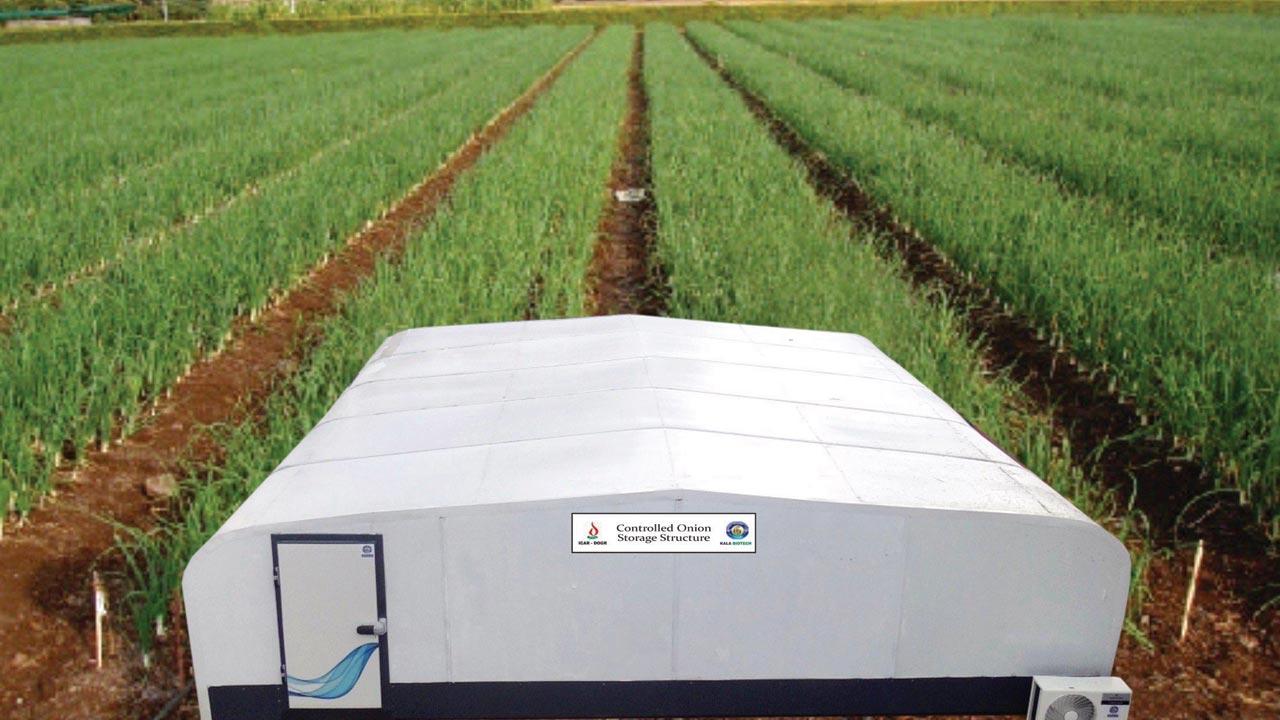
Admittedly, the onion crisis is a multi-layered one, with poor governing mechanisms, lack of pro-farmer policies, erratic monsoons, and panic imports being part of the sob story. But the DOGR maintains that upgradation of onion storage can salvage the situation to a considerable extent. In collaboration with Kala Biotech cold storage specialists, the institute has devoted the last three years to trying out different-sized versions of the low-cost controlled storage.
The smaller units in the campus, accommodating 50 and 100 tonnes suit the needs of small/marginal farmers. The institute did a comparative evaluation of the storage losses in traditional naturally ventilated single and double row storerooms, as against the new controlled storage facilities, which allow internal air circulation along with remote monitoring to maintain temperature (approximately 27 degree Celsius) and relative humidity (60 to 65 per cent). The modified design is sturdier—it isolates the onions from external climatic onslaught, and removes unwanted gases, reducing losses up to 10 to 15 per cent during crucial storage months.
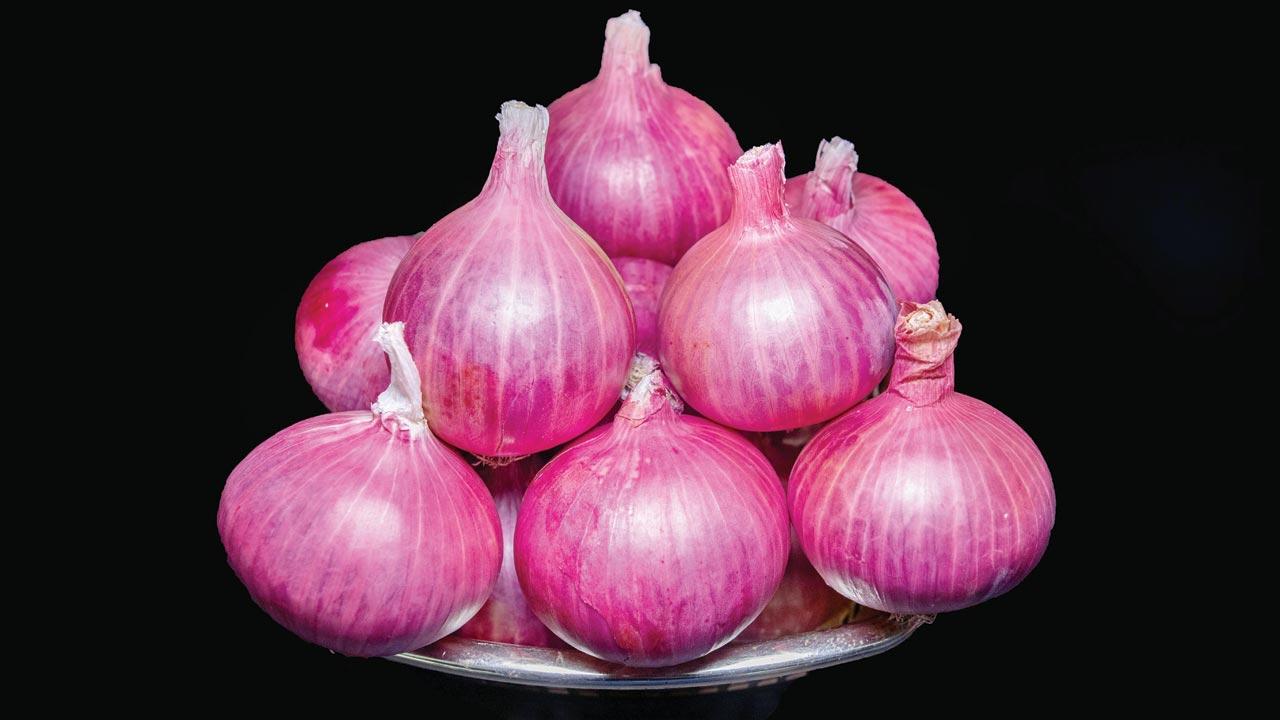
In the past, many have attempted to tackle the onion storage issue. Nashik-based startup Godaam is working around onion wastage prevention by placing sensors amid the stacks, which will notify the farmer about the spoil. Private players like the Tatas have launched an Agronest Solution, which detects onion sprouting or rotting. However, DOGR’s search for a low-cost viable storage model is commendable because it is aimed at a broad spectrum of subsistence and poor farmers. The onion growers can pool their onion crop and store it scientifically in a cooperative manner. The idea is also to store other vegetables and fruits when the onion is sold.
As DOGR’s scientist Dr Rajiv Kale says, “The trial runs of the various units have shown encouraging results on and off campus. Our aim is to popularise collective storage; the cost [tentatively placed at Rs 40,000 per metric tonne] can be borne by farmer producer companies, and not necessarily lone farmers.”
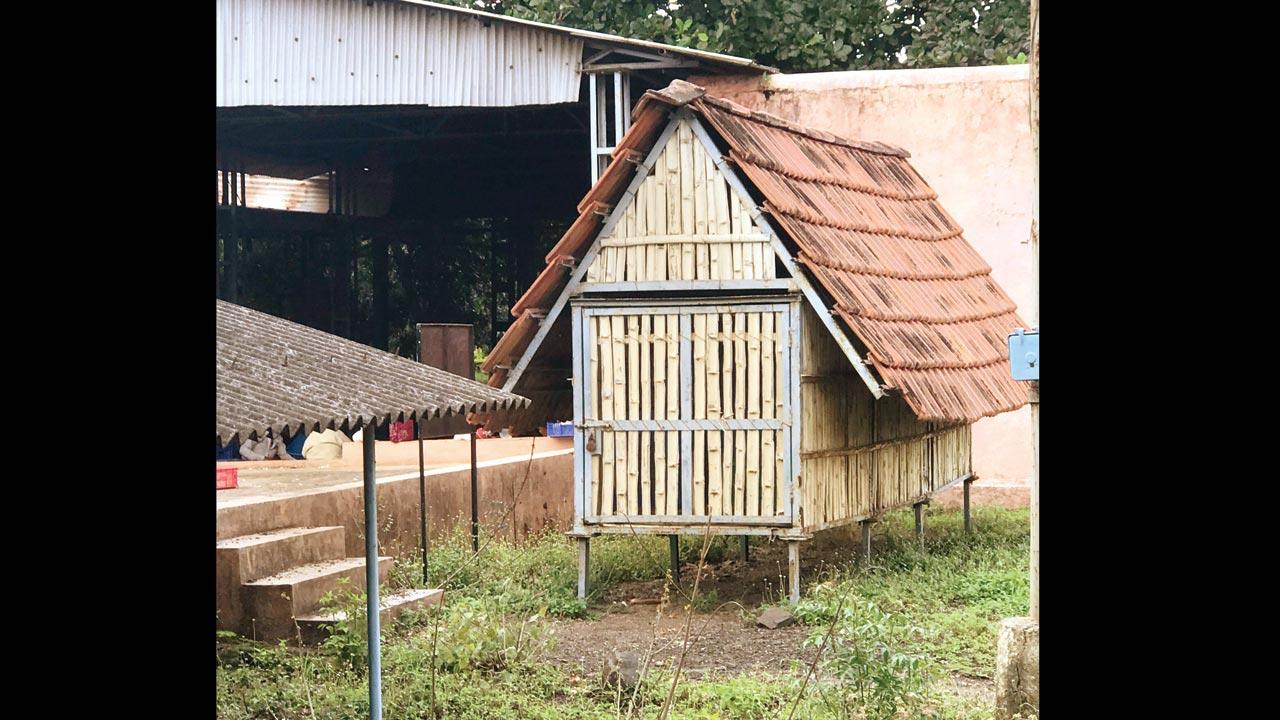 A traditional roofed structure for storage of onions
A traditional roofed structure for storage of onions
Kale and his team attends to farmers from all over Maharashtra, and sometimes from states as far as Mizoram and Sikkim, on an everyday basis. Either through online workshops or impromptu visits or Doordarshan’s phone-ins, the institute imparts guidance on seed quality and harvest techniques. A project on agri-business incubation at DOGR invites young minds to promote startups to solve farmers’ problems. Not a day passes when farmers don’t knock on the institute’s doors for coping strategies, pandemic times included. Conversely, the DOGR follows best practices of certain farmers.
The institute also evokes popular interest because of its novel biotechnological research interventions to develop superior drought-tolerant onion and garlic genotypes. It is at the forefront to develop genotypes with variable bulb colours; its white (Bhima Shubhra and Shweta) onion and purple garlic varieties are eye-catching beauties. Its experimentation in disease-tolerant and virus-free garlic has also been a breakthrough.
The institute has lasting bonds with onion and other farmers of the state, and not just in the Pune district (Rajgurunagar, Khed), where it is situated. In fact, many farmers have expressed interest in joining the institute. As the lore goes, resource-crunched farmers look upon the campus as a source of employment, young ones of marriageable age write letters to the DOGR Director for work and business opportunities; even a six-month stint improves their eligibility in the social circle.
Although the DOGR is sensitive to the farmers’ crisis, especially in the COVID-19 pandemic, it is unable to address all demands. But, in a one-peel-at-a-time approach, it is currently determined to avert farmers’ tears caused by storage losses.
40L
Onions (in metric tonnes) that are lost every year due to poor storage
Sumedha Raikar-Mhatre is a culture columnist in search of the sub-text. You can reach her at sumedha.raikar@mid-day.com
 Subscribe today by clicking the link and stay updated with the latest news!" Click here!
Subscribe today by clicking the link and stay updated with the latest news!" Click here!







